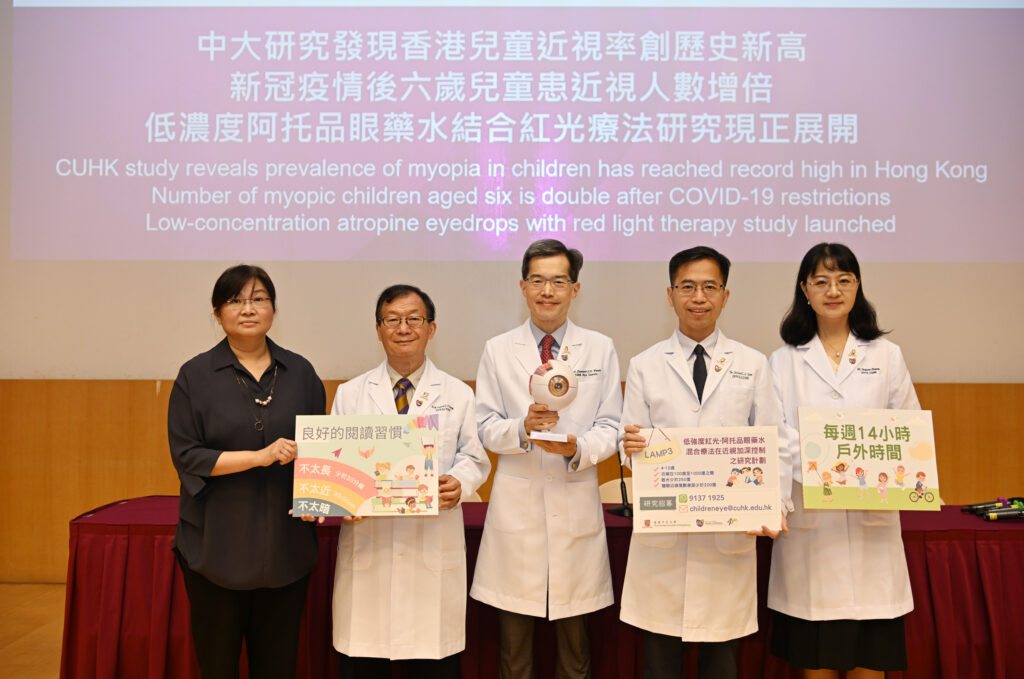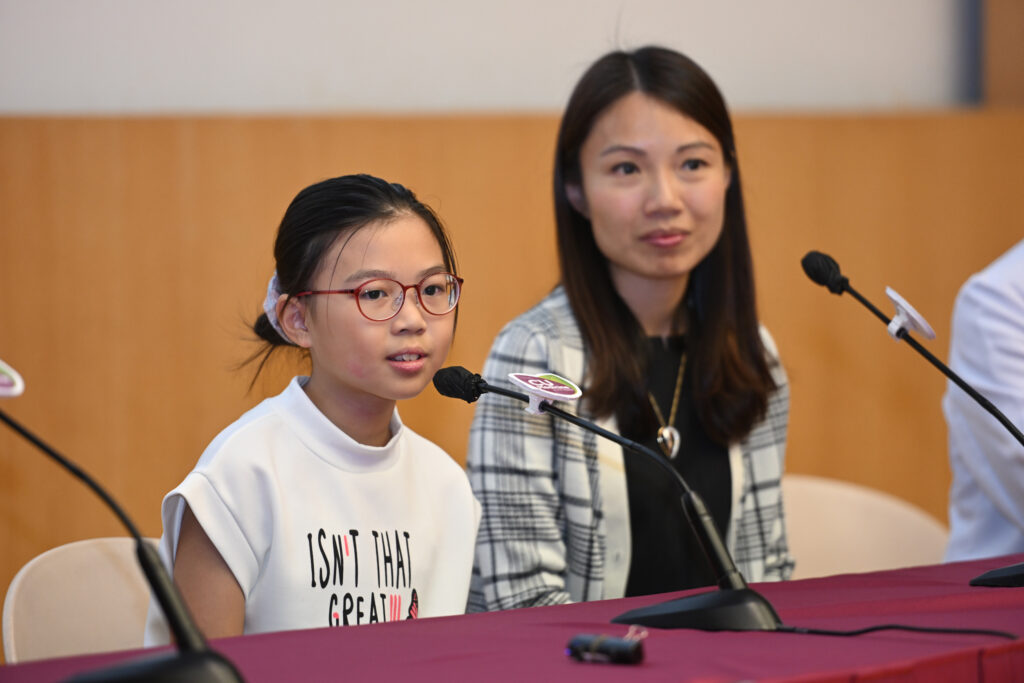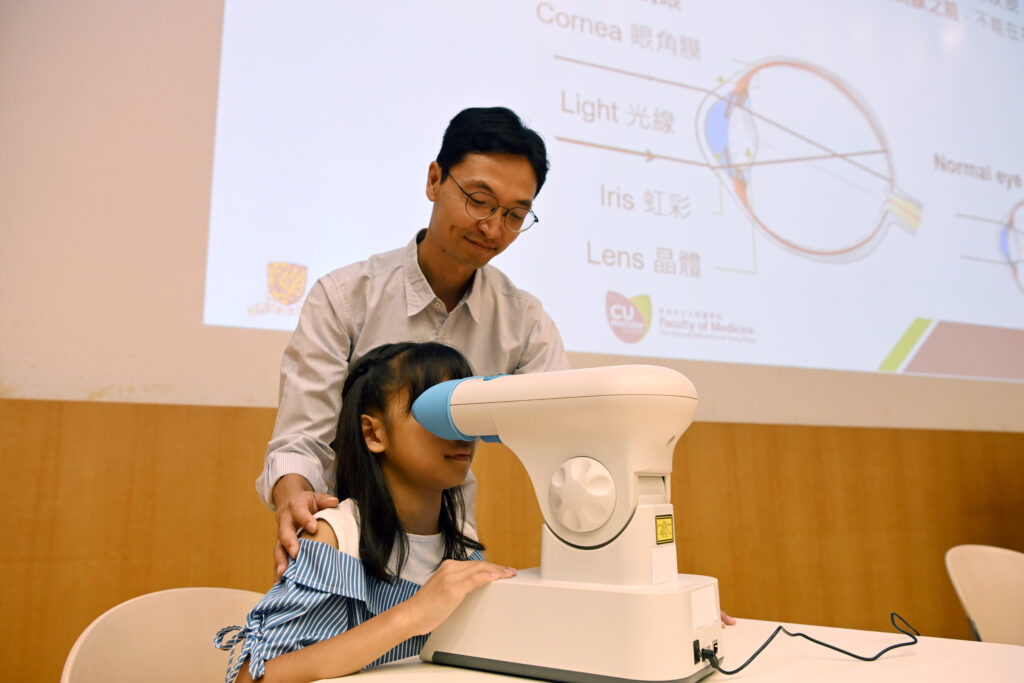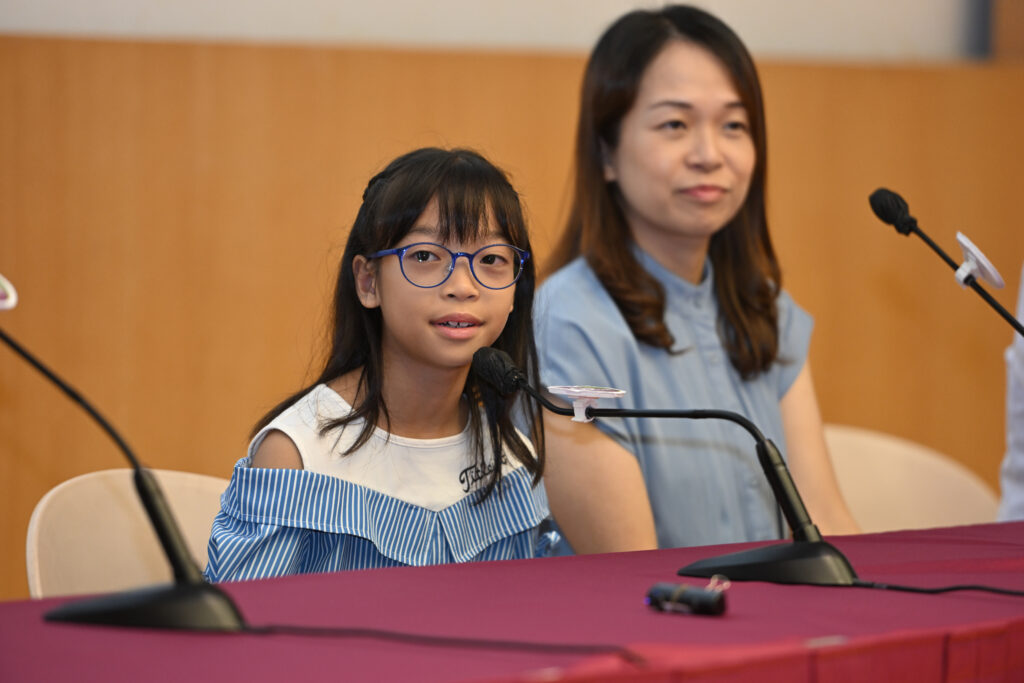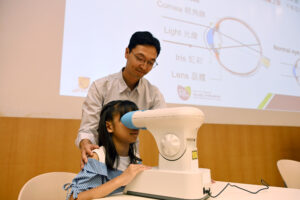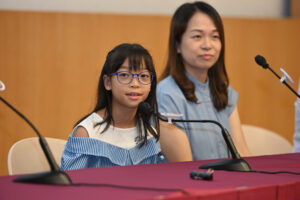CUHK
News Centre
CUHK study reveals prevalence of myopia in children has reached record high in Hong Kong
Number of myopic children aged six is double after COVID-19 restrictions
Low-concentration atropine eyedrops with red light therapy study launched
In order to have a thorough evaluation on the impact of COVID-19 restrictions on myopia prevalence in children and its lingering effect after the city returned to normal, The Chinese University of Hong Kong (CUHK)’s Faculty of Medicine (CU Medicine) research team conducted a population-based study looking at the myopia prevalence of children aged six to eight, covering the periods before, during and after COVID-19 restrictions. Results showed the prevalence of myopia in young school children in Hong Kong has reached a record high after the lifting of pandemic rules, with the rate doubling in children aged six. Experts expect myopia prevalence in Hong Kong children to remain high over the next few years. Findings have been published in the international journal JAMA Network Open.
Myopia boom observed during COVID-19 pandemic
Myopia is the most common ocular disease worldwide and is responsible for multiple ocular complications which carry a high risk of irreversible vision loss later in life due to excessive eyeball growth.
The CU Medicine research team reported in 2021 that the COVID-19 pandemic has triggered a “myopia boom” in school children. “Under the COVID-19 restrictions, school children were spending significantly less time outdoors and more time on near work. These two behaviours are associated with myopia development and progression. In the previous study, we observed a rise in myopia incidence during the pandemic, but what concerns us more is the long-term effects on children’s eye health,” said Professor Clement Tham Chee-yung, Chairman and S. H. Ho Professor of Ophthalmology and Visual Sciences from the Department of Ophthalmology and Visual Sciences at CU Medicine.
Myopia prevalence in children expected to remain high over the next few years
The research team recruited 20,527 children aged six to eight through the Department’s ongoing Hong Kong Children Eye Study, analysing their myopia prevalence over seven consecutive years (2015-2021) that cover three periods: before the COVID-19 pandemic, during COVID-19 restrictions, and after COVID-19 restrictions. Study data include dioptres, axial length, and questionnaires on the amount of time they spent outdoors, on screens and doing near work.
Results showed the myopia prevalence in children aged six to eight increased by half on average after the pandemic restrictions were lifted, to a record high of 36%. And more alarmingly, the study found the prevalence doubled in younger children aged 6 (see details in Table 1 of appendix).
Professor Calvin Pang Chi-pui, S. H. Ho Research Professor of Visual Sciences from the Department of Ophthalmology and Visual Sciences at CU Medicine, and Director of the Joint Shantou International Eye Centre of Shantou University and The Chinese University of Hong Kong, remarked, “Myopia is irreversible once it has developed. The earlier its onset, the greater the likelihood of high myopia occurring later in life, increasing the risk of developing myopia-related pathology and blindness. Complications of high myopia include glaucoma, macular degeneration, cataracts and retinal detachment. The doubled myopia prevalence found in younger children in this study causes concern about future increases in the rate of myopia.”
Dr Zhang Xiujuan, Research Assistant Professor from the Department of Ophthalmology and Visual Sciences at CU Medicine, said, “Parental myopia is known as one of the strongest factors associated with childhood myopia. But in this study, children with both parents without myopia were also seen to develop myopia to a larger extent than before the pandemic. Younger children and those from low-income families were at a higher risk of myopia developing during the pandemic. Our data showed children’s lifestyles, including outdoor time, near-work time and screen time, did not return to pre-COVID-19 levels after face-to-face lessons resumed. Myopia prevalence may remain high over the next few years.”
Dr Jason Yam Cheuk-sing, Associate Professor from the Department of Ophthalmology and Visual Sciences, CU Medicine, and Director of the CUHK Jockey Club Myopia Prevention Programme, concluded, “We recommend schoolchildren increase outdoor time and that parents and teachers help children develop healthy habits in using digital devices. It is also crucial to adopt interventions that can help manage myopia development and progression in young children. Our team has launched a study to investigate the efficacy and safety of combining low-concentration atropine eyedrops with red light therapy on young children aged four to 12.”
Interested individuals can contact the research team by WhatsApp (91371925) or email (childreneye@cuhk.edu.hk).
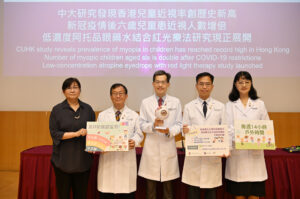
A CU Medicine study found that the prevalence of myopia in young school children in Hong Kong has reached a record high after the pandemics, with the rate doubling in children aged six. Experts expect myopia prevalence in Hong Kong children to remain high over the next few years.
From left: Ms Mandy Ng, Associate Director (Nursing), CUHK Jockey Club Myopia Prevention Programme; Professor Calvin Pang Chi-pui, S. H. Ho Research Professor of Visual Sciences and Director, The Joint Shantou International Eye Centre of Shantou University and The Chinese University of Hong Kong; Professor Clement Tham Chee-yung, Department Chairman and S. H. Ho Professor of Ophthalmology and Visual Sciences; Dr Jason Yam Cheuk-sing, Associate Professor and Director, CUHK Jockey Club Myopia Prevention Programme; and Dr Zhang Xiujuan, Research Assistant Professor from the Department of Ophthalmology and Visual Sciences, CU Medicine.
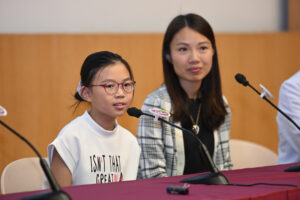
Nicole (left) says that she takes a short break and look at faraway objects after reading for 30 minutes to stop myopia progression.


